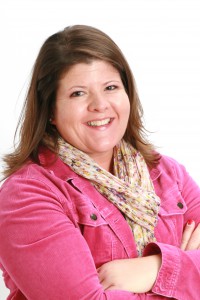Guest Post: How To Give Families The Support They Need After A Suicide Death
February 12th, 2016
One phone call can change your day, your calling, and your purpose as a professional.
As a funeral director, there are likely one or two families that you will remember forever. Perhaps it was the first death call you handled on your own as a new licensee. Maybe it was a death of a family you were personal friends with. Or possibly, it was a death caused by a disaster or other tragedy in your community. Whatever the particular circumstances of that memory, the service you provided started with a phone call from a family in need.
One phone call can change your life forever.
For me, one phone call brought my world to a dramatic stop. And my life re-started in a dramatically different way. That phone call brought the news that a terrible thing had happened in my family; my brother had died by suicide. That was nine years ago and I remember nearly every detail of that phone call, of arriving to the scene where he died, of the conversation with the State Police investigators, and of the days that followed for his calling hours and funeral.
I remember my family and I feeling supported by well-meaning family members, friends, and the general community. We had casseroles and fruit baskets that filled the kitchen. The mailbox was stuffed to capacity with sympathy cards from people we knew, and even some we did not.
I also remember our funeral director attending to our every need for those first few days. I’m so thankful for that outpouring support.
But what I remember just as vividly is the feeling we had in the days following the funeral service. I remember the sleepless nights and the hours spent silently sitting together in my parents’ house staring at one another when reality set in. My brother had taken his own life.
When a suicide death occurs, a family not only loses their loved one, but also loses all sense of normalcy. Many families face a sense of isolation caused by the manner of death. Like many tragic deaths, people don’t know what to say or how to say it. Some may try their best to offer sympathy, but their own thoughts and judgement interfere.
In the months following my brother’s suicide death, our small community experienced two additional suicide deaths that shook not only my family and me, but our neighbors and friends as well. In what turned out to be one of the best healing opportunities for me, I poured my heart and soul into learning more about suicide itself – why did this happen? Is my community cursed? Who else is going through something like this? – and I found myself comforted by the opportunity to volunteer and spread awareness.
In an incredible twist of opportunity – and a dramatic professional leap of faith – I left my career as a high school teacher to join the staff of a funeral directors association. Naturally, that raised some eyebrows and sparked several conversations about the switch. I was amazed to learn how many of the funeral directors I spoke with had served families like mine after a suicide death. I learned that while serving those families, many felt that they were missing an opportunity to do more to support them. In a way that cannot be explained, I’ve been able to share my story of my brother’s suicide death and help to inform funeral directors of how to best help families and communities when a suicide death occurs.
How To Help Your Families After A Suicide Death
Below is a list of things that I know would have been helpful for my family and me, along with things I’ve learned from the hundreds of families of suicide loss that I’ve had the opportunity to meet and chat with:
1. Community Support
If the death by suicide is that of a young person, you can expect there will be a large number of teens and vulnerable young people who come to your funeral home. Inviting the local school counselors or community mental health agency to be on hand to provide comfort and support will at the same time provide safety to other vulnerable young people who may be at-risk for suicidal thoughts and behaviors themselves.
2. Local Resources
Do you know of support resources in your community? Perhaps there is a support group specifically for survivors of suicide loss. There may also be resources in your area for outreach visits from other survivors of suicide loss. One resource I’ve found particularly helpful is the American Foundation for Suicide Prevention.
3. Clean-up Services
The data tells us that firearms account for nearly 50% of all suicide deaths. Many suicide deaths also occur in the home. These two factors result in a family’s home turned into a crime scene, not only for the law enforcement investigation, but also in terms of clean up. Think of the family’s desire and physical/emotional need to feel safe and secure – and comfortable – but unable to return home immediately. You can help to expedite their return home by knowing of clean-up services in your area. A simple Google search and a few phone calls should provide you with information to keep on hand for the next family in need.
4. Healing Conferences
By U.S. Senate Resolution, the Saturday before Thanksgiving each year has been identified as Survivors of Suicide Loss Day. All across the country – and the globe – healing conferences for families of suicide loss are organized in local communities. This is a great opportunity to provide families with the opportunity to meet with other families who’ve walked a similar path.
5. Calendar of Support
One funeral director shared an amazing idea with me – one I wish my family and I had experienced. As friends and family enter your funeral home for calling hours or the funeral service, they visit the register/guest book. One funeral home put a matching stand next to it with a blank calendar for the following three months. They encouraged friends and community members to “sign-up” for a date to provide support for the grieving family. The community provided meals, flowers, books, gift cards, and hugs for the grieving family. When a suicide death leaves a family feeling isolated and alone, and community members feel unsure of what or how to help, a specific date and opportunity is a win-win for everyone.
6. Have the Conversation
A suicide loss is like no other. The overwhelming question of “Why?” haunts every family who has been impacted by this type of death. Sometimes the grief and the hurt become a dark hole. You can provide the family with phone numbers and local sources of support if they are feeling overwhelmed by their grief or particularly anxious. One particular resource is the National Suicide Prevention Lifeline which is available 24/7/365 at 1.800.273.TALK (8255) or suicidepreventionlifeline.org.
7. Protect the Family
The rumor mills seem to work overtime following a suicide death… particularly in small, tight-knit communities. You can help to protect the family from the added hurt and isolation by being prepared for how to deal with those “inquiring minds who want to know” every single detail or “what happened?” Start by preparing the family for these types of questions. It’s helpful for the family to think about and plan for how they want to say their loved one died. Being especially careful to avoid graphic details, saying something like “She took her own life” or “He died from depression” or “She died by suicide” are acceptable and helpful. Encourage the family to stay away from terms like “He had an accident,” as this not only prolongs their reality, but also isolates them from the community support that is available to them both by professionals and others who have experienced a suicide loss themselves.
One phone call can change a life. You can help a family whose world has just turned upside down by offering these additional supports. Until no more calls report a death by suicide.
About The Author
 Marianne Reid Schrom is the Director of External and Member Relations at the New York State Funeral Directors Association (NYSFDA) and Director of the Association’s Family Assistance Commission (FAC). FAC is comprised of a group of trained, licensed funeral directors from across the state who stand ready to assist New York State’s local governments in the event of a mass fatality disaster occurring within their borders. Marianne is also a contributor to NYSFDA’s popular blog Sympathy Notes.
Marianne Reid Schrom is the Director of External and Member Relations at the New York State Funeral Directors Association (NYSFDA) and Director of the Association’s Family Assistance Commission (FAC). FAC is comprised of a group of trained, licensed funeral directors from across the state who stand ready to assist New York State’s local governments in the event of a mass fatality disaster occurring within their borders. Marianne is also a contributor to NYSFDA’s popular blog Sympathy Notes.
She is a member of the National Loss & Healing Council of the American Foundation for Suicide Prevention (AFSP.org) and has provided suicide prevention and awareness training to various professional communities in addition to training New York State funeral directors on appropriate suicide postvention response.


Marianna, I loved your article, and as I read it I thought of you and then saw you were the author. Oddly enough I just had a burial today, Friday, Feb. 12, 2019 for a young lady, 26 years, who took her life. Your article and suggestions I will use. Thank You for sharing with us.
Norman L. Waterman, CFSP
Funeral Director, Newark, NY
This is such a beautifully written piece. I’m a little emotional after having read it, and at the same time feel it has enriched my life. Thank you.